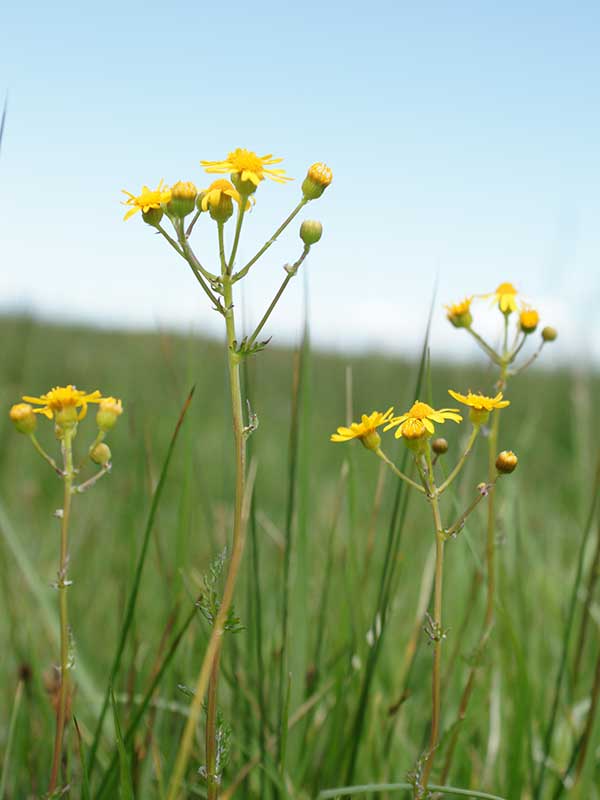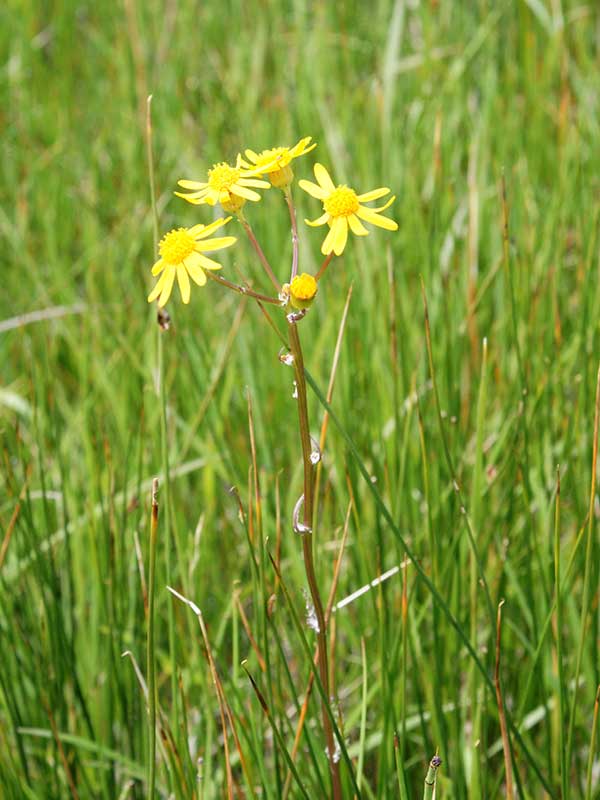Packera pseudaurea / falsegold groundsel
- yellow, flat-topped cluster of daisy-like flowers
- oval, erect basal leaves with long petioles and round/blunt-toothed edges
- generally in moist to wet habitats
Also known as: streambank groundsel, streambank ragwort, western heart-leaved groundsel
Falsegold groundsel is found in a variety of moist habitats including fens, stream banks and moist/wet meadows. Because it can spread from its roots, it sometimes forms very large colonies standing out from and above the grasses, sedges, rushes and horsetails. The photos in the gallery were taken in the fen near Fox Creek East in the central Valley.
Falsegold groundsel flowers are typically in a more-or-less flat topped cluster. Each head is on a stalk branching from the top of the flowering stem. Neither the stem nor the stalk is hairy. At the base of each stalk as well as up the stalk itself, there are scale-like bracts. Individual blossoms (“flowers”) are less than an inch across, with a central dome of disk florets and varying numbers of ray florets – 0, 8 or 13. Below, there is an involucre with a large number of green bracts (i.e. 21) which may or may not have purple tinged tips.
The majority of the leaves of falsegold groundsel are basal, oval-shaped with long petioles and blunt-toothed edges. At most they are about 1½ inches long and ¾ inch wide. As illustrated in the gallery, they are generally held erect.
Overall, Packera pseudaurea has some look alikes but not in the wetter areas. The major one, Rocky Mountain groundsel (P. streptanthifolia) is found in upland, rocky and drier habitats. Looking at the plants closely, the Rocky Mountain groundsel is distinctly hairy. This may be moot, however; as of the spring of 2021, I have not seen that species in the Valley.
| Color | |
|---|---|
| Family | |
| Blossom size | |
| Inflorescence size | |
| Inflorescence type | |
| When? | |
| Where? |



